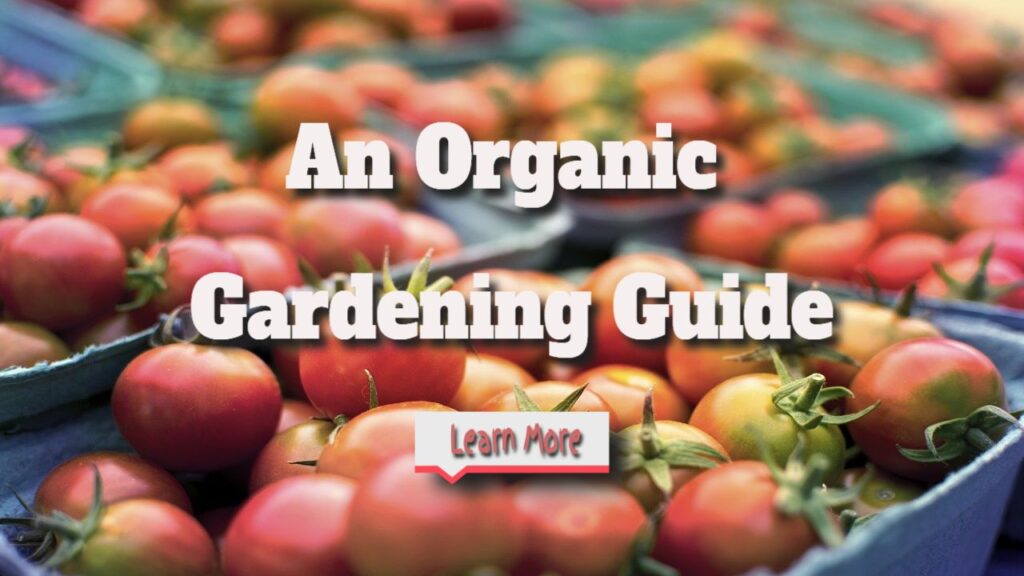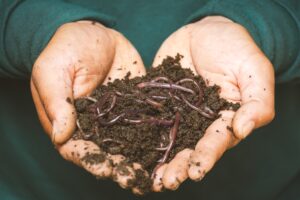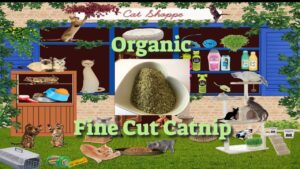How to Garden Naturally: An Organic Gardening Guide
How to Garden Naturally: An Organic Gardening Guide: Want to learn more about organic gardening and how you can help protect the environment? We’re here to assist you.
To decrease the amount of artificial and potentially hazardous toxins we consume, an increasing number of individuals worldwide are purchasing organic fruit as part of their weekly grocery shopping.
So it’s a reasonable next step for those of us who garden to look for a more natural technique here.
Why would we want to treat our homegrown flowers, fruits, and vegetables with potentially dangerous pesticides and fertilisers if we don’t want farmers spraying our crops with potentially harmful pesticides and fertilisers?
But where do you begin, and how simple is it to transition to organic gardening?
Whether you’re a newbie looking for organic gardening ideas or an experienced gardener looking to move to organic gardening practices, this guide has plenty of suggestions.
WHAT EXACTLY IS ORGANIC GARDENING?
Organic gardening refers to the cultivation of plants without synthetic chemicals. Working with nature rather than against it by spraying and artificially feeding it to promote growth and flowering, the garden begins to protect itself, and plants thrive with minimal intervention.
Every component of a garden, including flowers, trees, bushes, and lawns, as well as vegetables, fruits, herbs, tubs, and window boxes, can be handled organically, and it can be done everywhere in the world, regardless of where you reside or the size of your outside space.
One of the most well-known proponents of organic gardening in the United Kingdom is television personality Alan Titchmarsh. The objective is to work with your garden’s strengths and traits rather than against them, selecting appropriate plants for the surroundings and avoiding anything that requires artificial assistance to stay healthy, “he claims. I have a strong interest in organic gardening and have done it for over 30 years.
As a result, the garden is teeming with biodiversity, and the collection of beneficial insects that have prospered due to the lack of chemicals makes outbreaks of specific pests improbable.
Gardeners in the United Kingdom aren’t the only ones enthusiastic about organic gardening. Jo-Ellen Meyers Sharp, president of GardenComm in the United States, is a well-known garden speaker in the United States and has been an organic gardener for many years.
“There’s a lot of interest in it now,” she says, “, particularly among newbies who got into gardening during the pandemic last year.” I do it because I’m curious about how my plants have been treated.
The most challenging difficulty is being patient and allowing Mother Nature to do her thing, especially when you observe a plant with an insect infestation.”
It’s the same in Australia. Gardening Australia, a popular weekly gardening show on our national television network, focuses on organic growing, “says former host Stephen Ryan, who now operates the YouTube channel The Horti-Culturalists. My one-acre organic garden is entirely organic.
We don’t have a single piece of green waste that leaves it, and I bring in even more – green waste from the grocery and used coffee grounds from a coffee shop. Because all of our grey and black water is discharged through a worm composting toilet, nothing organic ever leaves the property!
WHY IS ORGANIC GARDENING ESSENTIAL?
Aside from the potential health benefits of not using pesticides for you and your family, organic gardening helps to safeguard the earth as a whole.
“The greatest approach to maintaining our food supply, environment, health, and well-being is to employ organic producing methods,” says Garden Organic, an organisation that provides practical assistance for organic growers.
Even though most household gardens are modest, there are an estimated 15 million of them in the United Kingdom alone. If even half of these were handled organically, the environment for people, garden ideas for wildlife, and the plants themselves would be vastly improved.
Imagine the immense good impact that could be had if many gardens around the world were similarly handled organically.
HOW DO I BUILD AN ORGANIC GARDEN?
Organic gardening may be done in any garden, and the equipment required is the same as conventional gardening. It also doesn’t require much more time than you’d spend gardening, with some planning.
The first step toward organic gardening is determining the type of soil.
Plants enjoy varied soil conditions, and the easiest method to grow them with the least amount of effort is to plant those at home in your garden.
If your soil is alkaline, it’s pointless to cultivate acid-loving plants like rhododendrons and azaleas. To determine if your soil is acidic or alkaline, purchase a cheap pH tester from a garden centre.
Plants are not only particular about soil type, but they are also picky about other growing circumstances. To evaluate the various regions of your garden – which bedding ideas are best suited to a shady location or an entire sun area, which areas of your garden are dry and which are slightly boggy? Then you can select your plants accordingly.
PEST AND DISEASE CONTROL IN ORGANIC GARDENING: WHAT DO I DO?
This is frequently the most pressing concern for anyone wishing to cultivate organically, especially if they are accustomed to grabbing for the chemical spray at the first indication of a blackfly invasion. Avoiding the use of chemicals is the greatest approach to preventing disease in the garden and avoiding problems in the first place.
Plants that are known to be disease resistant should be prioritised, as should those that are well-suited to the soil and conditions in which they will be growing. You’ll have a good chance of keeping a successful garden without chemicals.
” Alan Titchmarsh states that every plant has a pest, but every pest has an adversary, “Alan Titchmarsh states. Organic gardeners grow shrubs and trees to promote insect-eating birds that provide food and nesting locations. A pond also attracts pest-eating toads and newts.
An average pair of blue tits collects up to 15,000 caterpillars for their young in the spring. Thus they are organic gardener’s friends! Conifers and fast-growing clematis are excellent candidates for encouraging them to nest, and hollies and mahonias produce plenty of berries.
Ladybugs and hoverflies are the best aphids and blackfly predators – Limnanthes douglasii and Convolvulus tricolour grow easily in most climates and are a great way to get them in your garden.
You are spraying aphids with mild soap and water from a home spray (such you use when ironing), placing half a grapefruit filled with beer in the bed to attract slugs, or simply plucking the pests off with your fingers and crushing them (if you can stand them) all work wonderfully. Slugs can be deterred by using salt or pine needles around vulnerable plants.
WHAT ARE THE ADVANTAGES OF COMPANION PLANTING IN ORGANIC GARDENING?
Gardeners in the past were well-versed in the concept of “companion planting,” which entails growing specific plants together to repel pests, ward off disease, and yield larger harvests. Many of these historical concepts are still valid today and are great for organic gardening.
Highly fragrant plants, for example, can be used to keep pests away from prized vegetable crops – peppery nasturtium, for example, can help keep black flies away from broad beans by attracting them to themselves instead. At the same time, basil keeps aphids away from tomatoes and is also said to improve their flavour.
Summer savoury is an effective treatment for black fly on broad beans, and if you want to produce carrots, plant them beside green onions – the onion smell can repel carrot root fly. Mint can be used to keep flea bugs away from radish leaves.
If you learn how to cultivate roses, planting garlic cloves at their roots will make them healthier. In addition, plant some marigolds in the greenhouse to keep whiteflies away.
Slugs will be drawn away from the plants by a pile of lettuce leaves at the side of the vegetable bed; remove them every morning. Grow more dill and fennel than you need, and let some of the flowers – they’ll attract hoverflies, which will help keep aphids away from many kinds of crops. And growing peas alongside beans will attract pollinators.
Do you want to learn more? Check out our companion planting guide for loads of great ideas on what you can plant next to each other.
HOW TO GET RID OF WEEDS IN AN ORGANIC GARDEN
Weeds compete for food and water with your plants. Hoeing, mulching (a thick protective layer laid over the soil to prevent light from reaching the weeds), manual weeding, and applying heat in a specially built flamer are all efficient alternatives to weed killers (available at garden centres).
However, the most crucial element is that the soil in the beds and borders is never bare, preventing weeds from growing in the first place: Plants must be packed down and mulched with bark, wood chips, leaves, cocoa shells, or gravel. If weeds still make it through, trim them off as soon as the flower buds form, so they don’t spread.
By staggering your crops, you can deprive weeds of even more light: Begin with the best groundcovers, then add medium shrubs, followed by taller shrubs, trees, and the best climbers at the back of the bed.
The post How to Garden Naturally: An Organic Gardening Guide appeared first on https://gqcentral.co.uk





